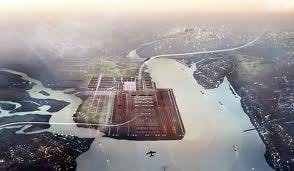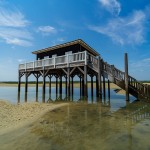UK airport consultation: A pilot’s view

Yesterday it was announced that the government’s consultation on a new UK aviation hub will begin in March. The process will focus on the need to retain the UK’s status as a major aviation hub and the options for siting a new airport close to London – including a detailed assessment of the ‘Boris Island’ Thames Estuary airport proposal.
This is welcome news – given we have previously built our biggest London airport in exactly the wrong spot from a safety perspective. Here’s why.
- In order to reduce the ground speed required for flight and the length of runway required, aircraft take off and land into the wind. This means that, at Heathrow, aircraft are predominately flying low and slow over Greater London to land on the two westerly runways – as 80% of winds in the UK are westerly.
- Heathrow, like most airports, has a mandatory 3 degree glide slope approach. This results in a descent of 300ft per mile on the ground – and given Heathrow’s position, means aircraft over the centre of our capital city are descending through 1500ft over our most populated areas.
- Taking these factors into consideration and looking at London as a clock face, the worst possible position for an airport is therefore at 9 o’clock – where we have inadvertently built our biggest airport. Far better to have aircraft descending and landing at airports in the 12 o’clock (Luton), 3 o’clock (proposed Thames Estuary) or 6 o’clock position (Gatwick) where their approaches will not affect such large areas of population.
- Landing is the most critical stage from a safety perspective – accident data shows that the majority of incidents occur on the approach. This is when an aircraft is most vulnerable, flying low and slow. As we saw with BA 777 crash in January 2008, an incident over London is an accident waiting to happen. Not to mention the nightmare scenario of a ground-to-air missile attack on low-flying aircraft coming into Heathrow.
The majority of pilots agree: We have in inadvertently built London’s major airport in the worst possible position. In their consultation for a new UK airport hub in London, the government should consider Manston (in Kent) or the Thames Estuary as the only viable locations.
Related content

10 rules of private jet-iquette

Top 10 beaches by private jet



